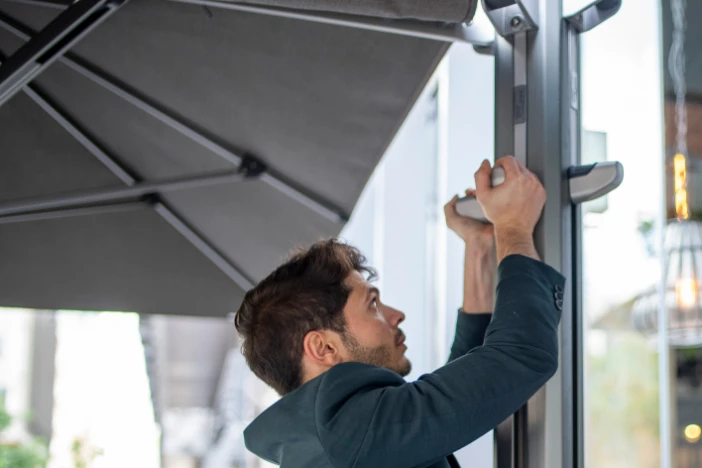
Operating your shade and wind performance
The aesthetic appeal of a patio umbrella is a lot easier to assess than its operation ease or resistance to changing winds. You might not love the idea, but it would be wise to do some homework. Who doesn’t like reading product manuals, right? Thankfully, many luxury brands have videos showing how to operate their shades and some even have wind tunnel testing in addition to quantitative stress tests.
How easy is an umbrella to use?
Whether you land on a market or a cantilever umbrella, evaluate how easy it is to operate the shade. That depends largely on the size of the umbrella, its functional characteristics, the outdoor environment and your activity. Every design has pros and cons with different options available within even the same model. Carefully consider each before making a selection.
Opening, Lifting & Closing
Small center pole umbrellas can be opened, raised and closed fairly easily by hand. Their lightweight canopies can usually be lifted with one hand while the other inserts a pin to secure it into place. It becomes more challenging with larger canopies that weigh more and may be higher off the ground (tough for shorter people). In those instances, crank mechanisms or pulleys are more efficient. Most side pole umbrellas use levers or cranks to open the canopy, while a few have gas-assisted technology to deploy oversized shades.
Rotating
If you plan to rotate a cantilever umbrella canopy to shade adjacent areas (e.g. lounge seating on one side and a dining set or outdoor kitchen on the other), you might opt for a model that has a lever mechanism. Many side post umbrellas have 360 degree rotational capability, but without something to grab, simply twisting the frame or walking a canopy around may prove difficult.
Tilting
You can tilt the front edge of many cantilever umbrellas by raising the canopy to less than its full height using a crank or lever lift. A few even tilt side to side with a slight adjustment. These mechanisms make it relatively effortless. Market umbrellas can be tilted by turning a crank, twisting a collar around the pole or pressing a button near the central hub. The first two options are pretty easy to manage, although you need to be keenly aware of the mechanism’s height if the umbrella is to be used through a hole in an outdoor dining table. Tilting using a push button can be a bit more challenging since you have to stabilize the canopy with one hand while you release the catch with the other. The button can also pinch your finger or thumb as it locks back into place if you’re not careful.
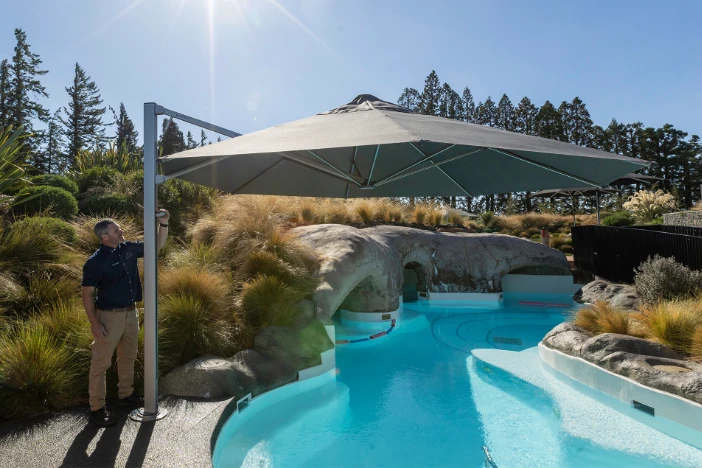
Covering
Market umbrellas are a breeze to protect using sleeve-like weather-resistant covers. They simply slide over the closed canopy from the top and secure the bottom around the pole via a snap or drawstring. Side pole umbrellas may have protective covers that wrap around both the post and collapsed canopy or the canopy alone. The former has the added benefit of creating an aesthetically pleasing minimalist profile when out in the open. The latter, however, leaves the covered canopy hanging like a bat from the horizontal arm. Most cantilever umbrella covers have an open seam to accommodate the framework as you wrap the canopy and seal it with velcro or snaps. If you don’t have a weatherproof cover, find out if there’s a custom one made specifically for your umbrella or the specifications for a generic option.
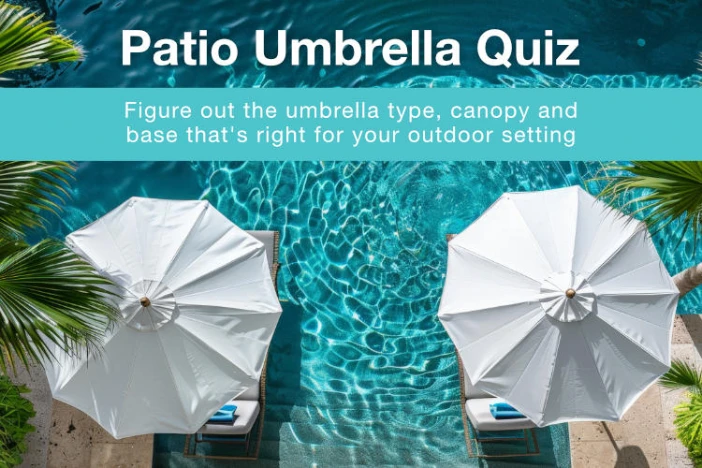
Moving
Portability is largely dependent upon the overall weight of your garden umbrella and whether or not your freestanding base has wheels. Market umbrellas can be relocated by removing the pole and canopy from the base, moving the base and then reinserting the pole into the base tube. The wheels are typically engaged by just tipping the base in the direction of the axle. However, large center post umbrellas and most side post umbrellas weigh too much or are too awkward to easily move piece by piece. In those cases a wheeled base is necessary, but even they can be challenging to navigate across a deck, patio or poolside area. The wheels lock into place to prevent movement when the umbrella is in use. Outdoor umbrellas that are mounted to the surface typically remain in place but can be unscrewed from connecting plates if necessary.
Quick steps – Relocating outdoor umbrellas*
Market Umbrella
Small to mid-sized center pole umbrellas can be moved relatively easily by one person but larger models may take two people to handle it safely.
- Close the canopy & secure it
- Loosen tube bolts
- Slide pole out of tube
- Lay umbrella near new location
- Roll or lift base to new location
- Insert pole into tube
- Tighten tube bolts
- Remove securing & open canopy
Cantilever Umbrella
Offset umbrellas are too awkward and heavy for one person to move by themselves, so two or more people are recommended to ensure safety.
- Close the canopy & secure it
- With the second person holding the mast in place, remove the mounting bolts
- Together, move the umbrella and lay it near the new location
- Unlock wheels and roll base to new location or remove base weights until it’s light enough to roll or carry there
- Lock wheels or bring removed weights to new location and add back to base
- Together, lift the umbrella upright
- Position it so the mounting holes align
- With the second person continuing to hold the mast in place, insert and tighten mounting bolts
- Remove securing ties & open canopy
*These are general guidelines. Always defer to a manufacturer’s own operational instructions for your specific outdoor shade.
Storing
Most center pole umbrellas store easily because the base is the only thing that takes up horizontal floor space. The pole and collapsed canopy are relatively narrow and only take up vertical space. Offset umbrellas, however, can vary greatly in storage requirements. Some have fixed frames with arms that remain extended even when the canopy is closed. Others have arms that collapse into the upright frame, thereby minimizing the horizontal space required to store them. Some designs allow you to remove the canopy entirely, so you can easily store it without ever moving the frame or base.

How important is wind speed for sun umbrellas?
The wind condition of your environment is a critical factor in evaluating outdoor umbrellas and materials. Still air or lazy breezes can accommodate almost any type of shade, whereas gale force winds require reinforced design, increased material strength and flexibility, as well as more substantial mounting and heavier base weight. Additionally, as wind gusts increase in intensity, it becomes increasingly important to properly close and secure canopies in a timely fashion to prevent damage and extend the life of your umbrella.
Beaufort Scale – Measuring Wind Speeds & Their Effects
The most common reference used by outdoor umbrella manufacturers to measure the wind tolerance of their shades is the Beaufort wind force scale. It was developed in 1805 by Irish hydrographer Sir Francis Beaufort to help sailors estimate wind conditions at sea. This scale is based on visual observation in lieu of scientific measurement tools and it helped to standardize what had been subjective. Later, land observations were added and measurable wind speeds were assigned to the descriptions. [Forrester 1986]
Most patio umbrella brands indicate the Beaufort scale level, along with the acceptable wind speed ranges, for each of their products and variations in size, shape, etc. Many put their umbrellas through grueling wind tunnel tests to determine their wind resistance (see video below). These tolerances are typically listed on specification sheets or in warranties since product damage coverage depends on proper use and maintenance under specific conditions. However, most manufacturers recommend that you tie-down or store umbrellas when weather conditions are severe or high winds are present.
Beaufort Wind Scale Chart
Below are the Beaufort scale levels and their corresponding descriptions, wind speeds and land conditions.
| Level | Description | Wind (mph) | Land Conditions |
|---|---|---|---|
| 0 | Calm | 0-1 | Smoke rises vertically |
| 1 | Light Air | 1-3 | Wind direction is indicated by smoke drift but not wind vanes |
| 2 | Light Breeze | 4-6 | Wind is felt on the face; leaves rustle; vanes begin to move |
| 3 | Gentle Breeze | 7-10 | Leaves and small twigs are in constant motion; light flags are extended |
| 4 | Moderate Breeze | 11-16 | Wind raises dust, leaves and loose paper; small tree branches move |
| 5 | Fresh Breeze | 17-21 | Small trees in leaf begin to sway |
| 6 | Strong Breeze | 22-27 | Larger tree branches move, whistling is heard in telegraph wires; umbrellas are used with difficulty |
| 7 | Near Gale | 28-33 | Whole trees move; resistance felt when walking against wind |
| 8 | Gale | 34-40 | Twigs break off trees; generally impedes progress |
| 9 | Severe Gale | 41-47 | Slight structural damage occurs; shingles blow off roofs |
| 10 | Storm | 48-55 | Seldom experienced inland; trees broken or uprooted; considerable structural damage |
| 11 | Violent Storm | 56-63 | Very rarely experienced inland; accompanied by widespread damage |
| 12 | Hurricane | 64+ | Widespread destruction |
Develop good habits and play it safe in iffy weather
The best way to ensure that your high-quality outdoor umbrella works properly and doesn’t break down is to use it correctly from the beginning. Regardless of the wind rating, we advise that you exercise caution when winds kick up and the weather turns nasty. Not only will you maximize your time enjoying the shade it provides but you’ll avoid aggregation and save money on repairs or replacement parts. Read the final section of this guide to get some thoughts on maintenance and cleaning.
Guide Sections
References
- Forrester, F. H. (1986). How strong is the wind? The origin of the Beaufort Scale. Weatherwise, 39(3), 147-151.


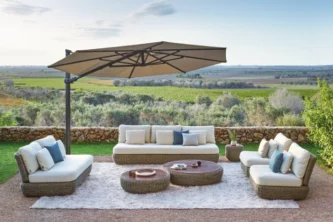
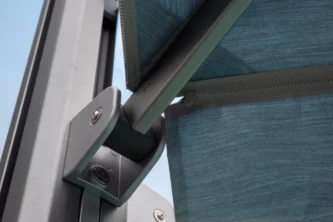
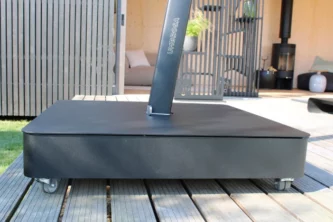
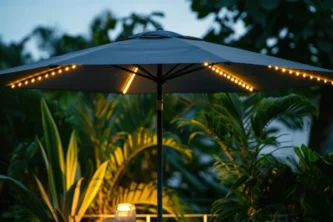





Leave a Reply